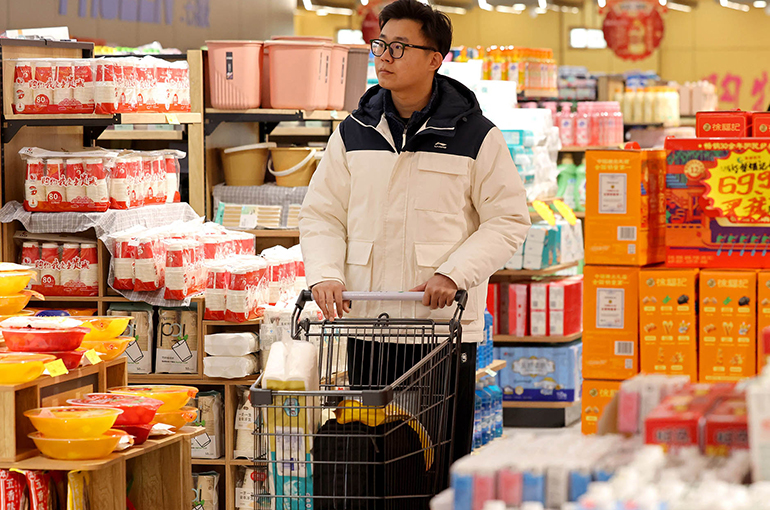 China’s Consumer Prices Rise in October After Two-Month Fall; Producer-Price Decline Slows
China’s Consumer Prices Rise in October After Two-Month Fall; Producer-Price Decline Slows(Yicai) Nov. 10 -- Consumer prices in China rose last month, ending a two-month slide, as measures to stimulate domestic demand gained traction and Golden Week holiday spending boosted consumption. Factory gate prices fell at a slower pace than in the prior month.
The consumer price index rose 0.2 percent in October from a year earlier, after falling 0.3 percent in September and 0.4 percent in August, according to data released by the National Bureau of Statistics yesterday. An Yicai poll of chief economists had predicted a 0.1 percent decline. The CPI expanded 0.2 percent on a monthly basis.
The core CPI, which excludes food and energy prices, climbed 1.2 percent from the same period of last year, marking the sixth consecutive month of expansion.
The rise in CPI is a good sign that China’s economy is picking up and domestic demand is increasing, Pang Ming, senior researcher at the National Institute for Finance and Development, told Yicai. The improvement in price indicators is broad‑based and solid, better than seasonal norms, and reflects smoother internal circulation and improved growth quality, he noted.
Policies to expand demand and consumption along with those to address supply-side issues are having a marked effect, he said, adding that the economy, expectations, and the industrial supply-demand relationship have all seen broad improvement.
Pork prices may rebound a little, general food prices should increase due to seasonal factors, but weak international oil prices are unlikely to reverse in the short term, said Wen Bin, chief economist at China Minsheng Bank.
With government policies taking effect, he said the underlying vitality of the consumer market is gradually strengthening, services consumption is continuing to pick up quickly, and core inflation is continuing to warm.
Factory Gate Prices
The producer price index fell 2.1 percent from a year earlier, slower than the 2.3 percent decline in September, NBS data also showed, mainly because of improvements in the supply-and-demand balance in certain industries and the transmission of international commodity prices. The economists polled by Yicai had forecast a 2.2 percent drop in the PPI.
On a monthly basis, the PPI inched up 0.1 percent for the first time this year.
According to NBS Chief Statistician Dong Lijuan, the improvement comes from two key drivers: better capacity management in major industries and the steady release of consumption as China builds a modern industrial system.
While efforts to combat involution-style competition in China have restrained raw material price increases, recent volatility in the external economic and trade environment is weighing on domestic industrial goods prices, said Wang Qing, chief macroeconomic analyst at Golden Credit Rating International.
Given that the PPI base was stable last November, this month’s year-on-year decline may be around 2.1 percent, Wang noted. There is also a possibility that the decline could deepen, but then it would likely remain stable at the end of the year.
Looking ahead, the steady rebound in the CPI and ongoing easing of deflationary pressures on the PPI will enable the overall price level to break free from its earlier low‑run operating state, Pang said. He noted that while external uncertainties and the firmness of effective domestic demand still require attention, the data brings more confidence about the economy’s sustained improvement.
Editor: Futura Costaglione